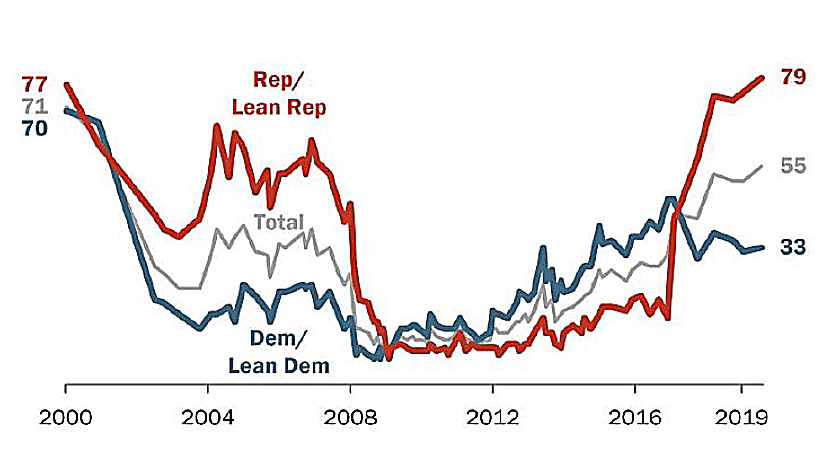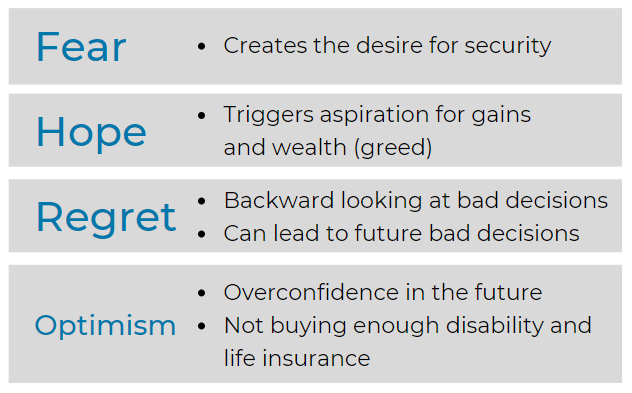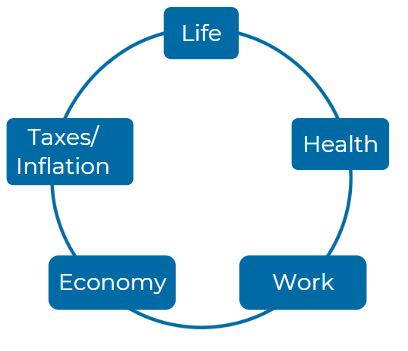Healthcare Provider Update: FedEx's healthcare provider is primarily Cigna, which partners with the company to offer health insurance solutions to its employees through a range of plans, including High Deductible Health Plans paired with Health Savings Accounts. In 2026, FedEx employees may face significant healthcare cost increases, mirroring a broader trend across the nation. With the expected elimination of enhanced ACA premium subsidies, some workers could see their out-of-pocket premium costs surge by over 75%. Coupled with the anticipated double-digit rate hikes from major insurers and rising medical expenses, the financial burden on employees is poised to escalate sharply, potentially impacting their overall healthcare affordability. Click here to learn more
Featured Video
Articles you may find interesting:
- Corporate Employees: 8 Factors When Choosing a Mutual Fund
- Use of Escrow Accounts: Divorce
- Medicare Open Enrollment for Corporate Employees: Cost Changes in 2024!
- Stages of Retirement for Corporate Employees
- 7 Things to Consider Before Leaving Your Company
- How Are Workers Impacted by Inflation & Rising Interest Rates?
- Lump-Sum vs Annuity and Rising Interest Rates
- Internal Revenue Code Section 409A (Governing Nonqualified Deferred Compensation Plans)
- Corporate Employees: Do NOT Believe These 6 Retirement Myths!
- 401K, Social Security, Pension – How to Maximize Your Options
- Have You Looked at Your 401(k) Plan Recently?
- 11 Questions You Should Ask Yourself When Planning for Retirement
- Worst Month of Layoffs In Over a Year!
- Corporate Employees: 8 Factors When Choosing a Mutual Fund
- Use of Escrow Accounts: Divorce
- Medicare Open Enrollment for Corporate Employees: Cost Changes in 2024!
- Stages of Retirement for Corporate Employees
- 7 Things to Consider Before Leaving Your Company
- How Are Workers Impacted by Inflation & Rising Interest Rates?
- Lump-Sum vs Annuity and Rising Interest Rates
- Internal Revenue Code Section 409A (Governing Nonqualified Deferred Compensation Plans)
- Corporate Employees: Do NOT Believe These 6 Retirement Myths!
- 401K, Social Security, Pension – How to Maximize Your Options
- Have You Looked at Your 401(k) Plan Recently?
- 11 Questions You Should Ask Yourself When Planning for Retirement
- Worst Month of Layoffs In Over a Year!
U.S. Initial Jobless Claims, Per Week

Total U.S. Nonfarm Payrolls

GDP Annualized Growth Rate

During the last 75.75 years (since 1945) there have been 190 declines of 5% or greater.

Sources: Standard & Poor’s Corporation; Copyright 2020 Crandall, Pierce & Company
The Market's Reaction to a Financial Crisis
Cumulative total return of a balanced strategy: 60% stocks, 40% bonds

Indices are not available for direct investment. Their performance does not reflect the expenses associated with the management of an actual portfolio. Past performance is not a guarantee of future results. Not to be construed as investment advice. Returns of model portfolios are based on back-tested model allocation mixes designed with the benefit of hindsight and do not represent actual investment performance. See the “Balanced Strategy Disclosure and Index Descriptions” pages in the Appendix for additional information.


data-hs-cos-general-type='widget' data-hs-cos-type='module'>
Consider these five Elements:
What are the implications of the Funding Target Attainment Percentage for FedEx Corporation employees, and how does it impact the security of the pension benefits offered by FedEx Corporation? This question seeks to explore the nuances of the funding target attainment percentage as reported in the annual funding notice, examining how this metric not only reflects the financial health of FedEx Corporation's pension plan but also how it affects employee confidence in future benefit payments and retirement planning.
Funding Target Attainment Percentage: The Funding Target Attainment Percentage for FedEx Corporation indicates the degree to which the pension plan is funded. A percentage of 101.33% for 2022 suggests that the plan has sufficient assets to cover its liabilities, providing security for employees' pension benefits. This high percentage likely increases employee confidence in the stability and reliability of their future pension payouts, essential for long-term retirement planning.
How does the merger of the FedEx Freight Pension Plan into the FedEx Corporate Employees’ Pension Plan influence the benefits currently available to FedEx Corporation employees? This question aims to delve into the practical changes that may arise due to this merger, assessing whether it aligns with employee expectations regarding their pension benefits and how the transition process is managed by FedEx Corporation.
Merger of Pension Plans: The merger of the FedEx Freight Pension Plan into the FedEx Corporate Employees’ Pension Plan appears to have been strategically managed to maintain benefit stability. Despite increasing liabilities by 5.3%, the merger was structured to ensure no negative impact on the benefit amounts payable to participants from either plan, preserving the expected pension benefits for all affected FedEx Corporation employees.
In terms of investment strategies, what measures does FedEx Corporation implement to ensure that its pension plan investments align with the long-term liabilities expected to be paid out to retirees? This question encourages an exploration of the investment policies in place, examining the asset allocations and risk management strategies that FedEx Corporation employs to ensure sustainable funding for its pension obligations, which could potentially include detailed analyses of stocks, debts, and alternative investments.
Investment Strategies: FedEx Corporation employs a diversified investment strategy across equities, fixed income, and alternative investments, aiming to meet long-term pension liabilities. This approach, which includes both active management strategies and the limited use of derivatives, is designed to generate returns that exceed market indices, thus ensuring adequate funding of pension obligations.
What options do employees of FedEx Corporation have for accessing their pension plan statements, and how frequently are these statements generated? The focus here is to understand the communication strategies employed by FedEx Corporation regarding pension benefit statements, including technological access points and the importance of these documents for employee financial planning.
Pension Plan Statements: FedEx Corporation provides annual pension plan statements through their Retirement Service Center, available electronically each fall. Employees can access their statements online or request them if notifications are not received, ensuring transparency and aiding in personal financial planning.
How are contributions to the FedEx Corporation Employees’ Pension Plan determined, and what role do excess contributions play in the plan's overall funding strategy? This question aims to educate employees about how the company balances mandatory contribution levels with potential excess contributions, exploring how these factors interact to influence the plan's solvency and employee benefits.
Contributions to the Pension Plan: Contributions to the FedEx Corporation Employees' Pension Plan are calculated to meet at least the minimum legal requirement and potentially include voluntary excess contributions. These excess contributions can help manage the plan's funding level and ensure its solvency, benefiting overall pension security for employees.
What types of benefits are guaranteed under the Pension Benefit Guaranty Corporation (PBGC) for FedEx Corporation employees, and what limitations exist that employees should be aware of? By focusing on the guaranteed benefits, this question prompts a discussion on the security of specific benefits provided by FedEx Corporation and highlights limitations, allowing employees to understand their rights fully.
PBGC Guarantee: The Pension Benefit Guaranty Corporation guarantees certain types of benefits for FedEx Corporation employees, such as pension benefits at normal retirement age and most early retirement benefits. However, there are limitations, such as exclusions for benefits without vested rights and recently increased benefits, which employees should be aware of to fully understand their pension security.
In what ways does the FedEx Corporation plan to adjust its pension funding strategy in light of changing federal laws that impact pension obligations? Employees are encouraged to consider how legislative changes influence corporate policies surrounding retirement benefits and the proactive strategies FedEx Corporation might take to remain compliant while ensuring the security of employee pensions.
Adjustments to Funding Strategy: FedEx Corporation is likely to adjust its pension funding strategy in response to legislative changes affecting pension obligations, such as those introduced by recent acts adjusting how pension liabilities are calculated. This proactive approach aims to ensure compliance with new laws while continuing to secure the financial health of the pension plan.
What are the steps that FedEx Corporation employees must take if they are considering retirement, particularly in how to navigate the pension plan and gain access to their benefits? This question aims to provide clarity on the retirement process, ensuring that employees are equipped with the necessary information regarding required documentation, timelines, and points of contact within FedEx Corporation.
Steps for Retirement Planning: Employees considering retirement should contact the FedEx Retirement Service Center to navigate their pension plan benefits. This process involves understanding necessary documentation, timelines, and available support, facilitating a smooth transition into retirement.
How does FedEx Corporation plan to manage potential funding shortfalls in the pension plan, and what mechanisms are in place for notifying plan participants should such an event occur? Employees would need to understand the proactive measures put in place by FedEx Corporation to address funding-related challenges while also knowing what this means for their benefits.
Managing Funding Shortfalls: In the event of potential funding shortfalls, FedEx Corporation has policies in place to manage such situations, including strategic contributions to mitigate shortfalls. The company maintains transparency with plan participants about funding levels and any significant changes affecting the pension plan.
For those seeking more information about their pensions and retirement options, how can FedEx Corporation employees contact relevant departments, and what resources are available for assistance? This question provides an opportunity for employees to familiarize themselves with contact points such as the FedEx Retirement Service Center, emphasizing the importance of open communication channels for addressing inquiries related to their pensions. Feel free to consult the provided document for more in-depth exploration of these topics.
Contacting for Pension Information: FedEx Corporation employees seeking more information about their pensions or retirement options can contact the FedEx Retirement Service Center. This center provides essential resources and support, ensuring employees have access to all necessary information regarding their retirement planning.
/General/General%203.png?width=1280&height=853&name=General%203.png)



















-2.png?width=300&height=200&name=office-builing-main-lobby%20(52)-2.png)









.webp?width=300&height=200&name=office-builing-main-lobby%20(27).webp)


-2.png)









.webp)